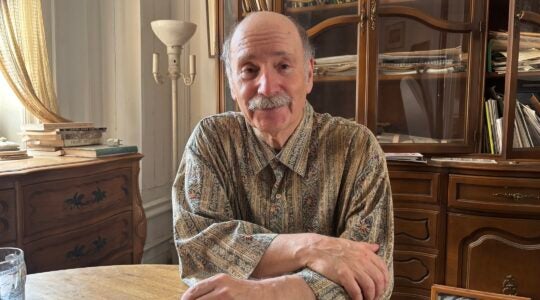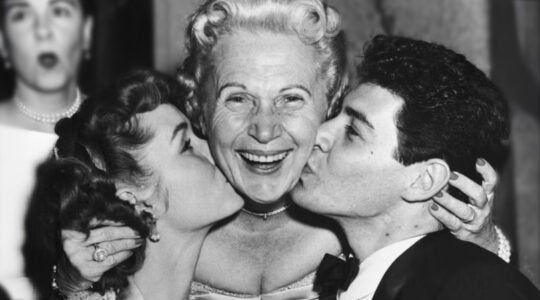The animal rights group PETA has called into question the manner in which cows are killed at a kosher slaughterhouse in Iowa that is under the supervision of the Orthodox Union.
People for the Ethical Treatment of Animals videotaped the process, which it calls “evidence of cruelty to animals,” but the OU’s kosher supervisor said the animals were slaughtered in a painless manner.
In a letter Tuesday to Rabbi Menachem Genack, the OU’s rabbinic administrator, PETA’s food specialist, Tal Ronnen, charged that the video taken at the AgriProcessors slaughterhouse in Postville, Iowa, demonstrated that the facility “compromises the integrity of your esteemed hashgacha [kosher supervision].”
Ronnen said the tape shows that the animals “routinely have their tracheas and esophagi ripped from their necks just seconds after shechita [ritual slaughtering], while they are still alive and fully conscious, and then struggle to their feet in agony for up to three minutes after this dismemberment.”
He pointed out that this violates the federal Humane Methods of Livestock Slaughter Act, as well as the “most fundamental” Jewish laws pertaining to kosher slaughtering.
Rabbi Genack said in a phone interview that all slaughterhouses are “very gruesome” places but that “shechita done properly is probably the most painless slaughter.” And he said the shechita performed at the Iowa facility was “a kosher shechita.”
“It involves severing the esophagus and trachea and the carotid arteries that are attached to them, and there is a profound and immediate blood loss,” he said in describing shechita. “The knife [used] is completely smooth and has no nicks. The severing itself of the critical vessels precipitates enormous blood loss, which makes the animal unconscious essentially. There is no pain because of the enormous blood loss and anemia to the brain.”
Rabbi Genack said there have been numerous studies about this process and when the humane slaughter act was passed, the U.S. Department of Agriculture and the U.S. government affirmed that shechita is a humane form of slaughter.
“They did that partially based on studies that were done that showed there was no pain to the animal afterwards because of this enormous loss of blood,” he said.
Ronnen in his letter quoted the chief rabbi of Haifa, Shear-Yashuv Cohen, as saying that based on the videotape, he found that the shechita was “definitely unacceptable by halachic [Jewish law] standards.”
Rabbi Genack said he spoke by phone with Rabbi Cohen and that the Haifa rabbi mistakenly believed that the animal’s throat was torn away before shechita was performed. And Rabbi Genack said he spoke with officials of the USDA, which also viewed the tape, and that the process at the plant “seems to be within the guidelines of the USDA.”
PETA has gained attention for its sometimes controversial tactics in defending animal rights, which has included an ad campaign that compared the suffering of animals to that of Holocaust victims and throwing blood on people wearing fur coats.
The group showed the slaughterhouse video to Rabbi David Rosen, a former chief rabbi of Ireland who used to oversee the operation of kosher slaughterhouses in Ireland, and quoted him as saying that the shechita shown on the video “involves flagrant violations of Jewish halachic requirements.”
“Such behavior desecrates Jewish teaching and values,” Rabbi Rosen said, “and the meat of the animal abused in this way is rendered totally non-kosher as a result.”
In a phone interview, Rabbi Rosen said he based those comments on “the video sent to me and based upon the comments I heard from the chief rabbi of Haifa.”
He said he has witnessed kosher slaughtering at plants around the world and “have never seen such reactions” in animals after shechita.
“It appears the animal is functioning when this [shechita] is done and it seems to indicate that the initial incision was not done in accordance with halachic requirements,” Rabbi Rosen said. “I cannot be 1001 percent sure when you are looking at video material that you are actually seeing what is happening, but I have never seen an animal function to a degree as on the video.”
Rabbi Genack insisted that the movement of the animals was nothing more than a “reflexive action” similar to chickens that run around after their heads have been cut off.
The New York Jewish Week brings you the stories behind the headlines, keeping you connected to Jewish life in New York. Help sustain the reporting you trust by donating today.




